Welcome to our comprehensive guide on Banana Fertilizer Requirements and Recommendations! You’ve come to the right place if you’re a banana enthusiast or a farmer looking to optimize your harvest. Bananas are a favorite worldwide, and to ensure they grow healthy and fruitful, understanding their unique fertilizer needs is essential.
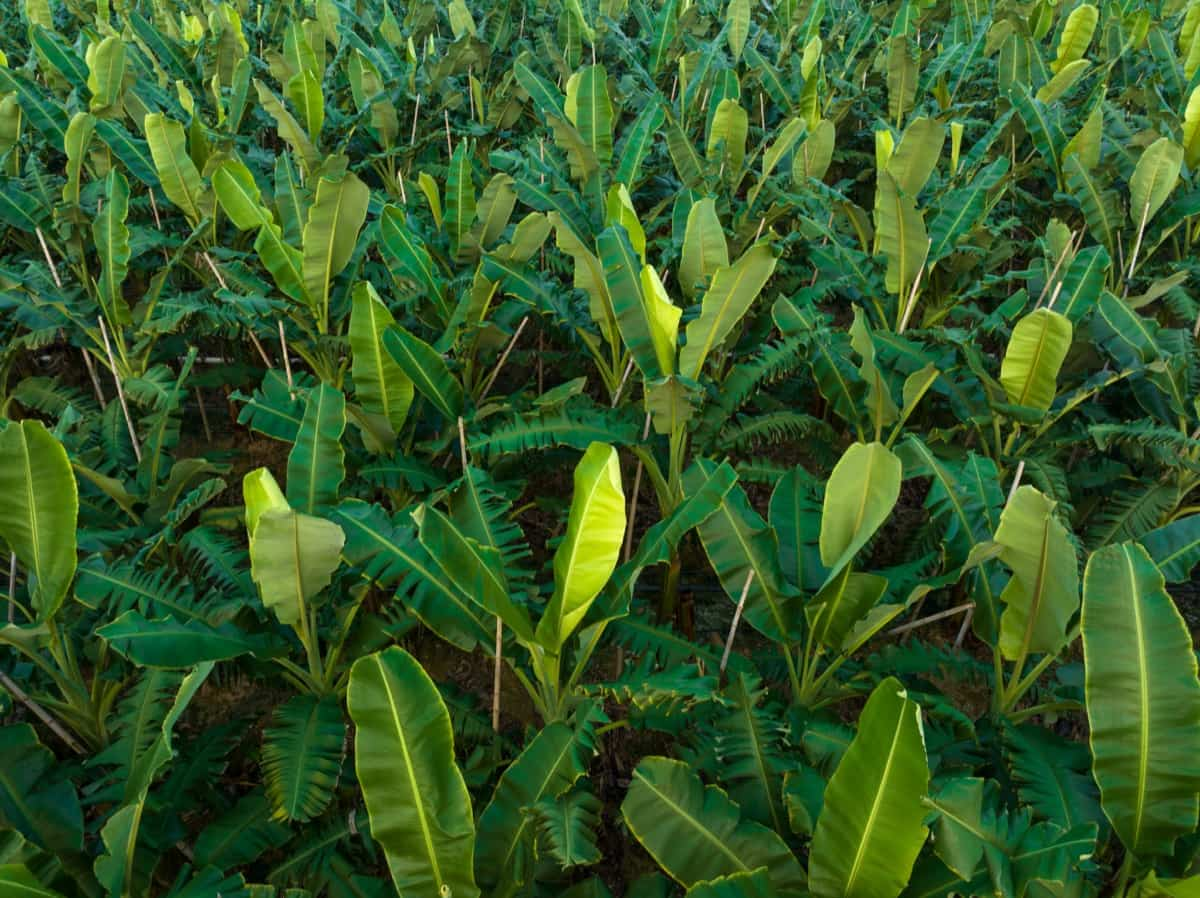
This blog delves into the key nutrients bananas crave, the best fertilizers, and the ideal application techniques. We’ve covered you with accurate data and easy-to-follow recommendations from nitrogen to potassium ratios.
Banana Fertilizer Requirements
What to Feed Banana Plants
Essential nutrients like nitrogen, phosphorus, and potassium are necessary to promote healthy growth and sweet fruit production in banana plants. You can opt for a balanced fertilizer with micro and secondary nutrients, apply it regularly or tailor the feedings based on the plant’s growth stage. During the growing season, a nitrogen-rich fertilizer can be used monthly, transitioning to high phosphorus or high potassium food when the plant starts flowering. Conduct a soil analysis and adjust the feeding accordingly if any deficiencies are suspected.
How to Fertilize a Banana Tree Plant
As banana trees are heavy feeders, regular fertilization is crucial for optimal productivity. For mature banana plants, apply 1 ½ pounds (680 g.) of 8-10-10 fertilizer per month while using half the amount for dwarf indoor plants. Incorporate the fertilizer into the soil around the plant, allowing it to dissolve with each watering. Alternatively, mix the fertilizer with water and apply it during irrigation. Water and fertilize when the soil dries to about ½ inch (1 cm.).
High Nitrogen and High Potassium Fertilizers
The approach differs slightly for those using high nitrogen and high potassium fertilizers. Following the manufacturer’s instructions during the growing season, apply the high-nitrogen fertilizer monthly. As the plant begins to flower, reduce the nitrogen fertilizer and switch to a potassium-rich one. Cease fertilization if the soil has a pH of 6.0 or lower or when the plant starts to fruit.
Best Fertilizer for Banana Plants
The best fertilizers for banana plants include organic compost, balanced NPK, banana peel fertilizer, vermicompost, potassium-rich fertilizers, liquid seaweed fertilizer, slow-release fertilizers, and organic banana special fertilizer. These fertilizers promote soil health, enhance fruit quality and taste, and prevent diseases while improving overall plant health and resilience. Additionally, slow-release fertilizers provide gradual nutrients, reducing frequent applications.
In case you missed it: High-Density Banana Plantation: Spacing, Plants Per Acre, Techniques, and Yield
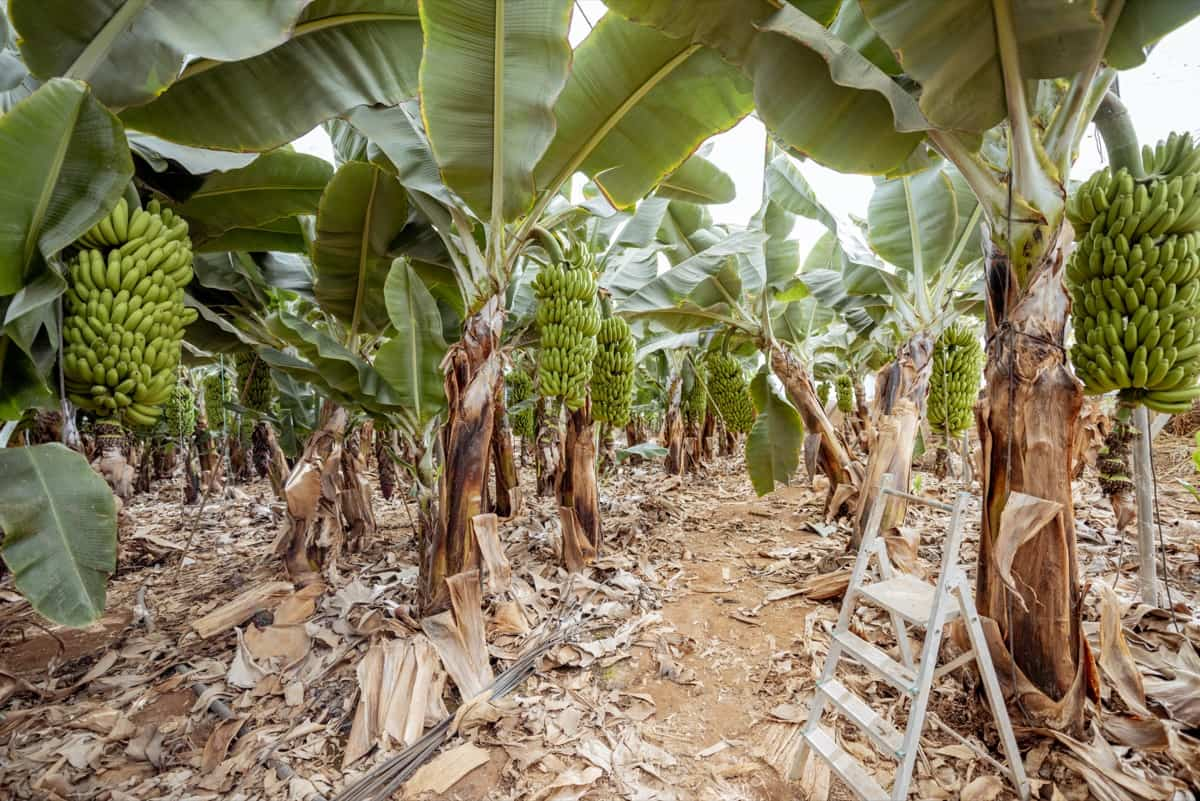
Organic Banana Fertilizer
Organic banana fertilizers promote sustainable growth by providing essential nutrients, improving soil health, and promoting robust plant growth. Manure, banana peel compost, vermicompost, green manure cover crops, seaweed fertilizer, pruned leaves and stems, and fish emulsion benefit banana plants. Additionally, green manure cover crops enrich the soil with nitrogen, seaweed fertilizer boosts plant health and resilience, and pruned leaves and stems as mulch enrich the soil.
NPK Ratio for Banana Plants
The NPK ratio for banana plants refers to the proportion of essential nutrients Nitrogen (N), Phosphorus (P), and Potassium (K) required for optimal growth and fruit production. A balanced NPK ratio of 3-1-6 for banana plants means the plant needs three parts nitrogen, one part phosphorus, and six parts potassium. Nitrogen is crucial for leaf and stem growth, while phosphorus supports root development and energy transfer. Potassium enhances fruit quality and overall plant health. Maintaining the correct NPK ratio is vital for healthy banana plant growth and abundant fruit yield.
Micronutrients for Banana Plants
- Micronutrients are crucial for healthy growth in banana plants. Calcium deficiency can be controlled with lime (50g/plant) followed by irrigation.
- Magnesium deficiency can be detected through yellow midblade and midrib, green margins, and purple mottling on petioles. Sulfur deficiency can be controlled with complex fertilizer (20:20:0:15) @ 20g/plant, followed by irrigation.
- Manganese deficiency can be controlled with Manganese Sulphate (0.5%) on the leaves. Zinc deficiency can be controlled with Zinc Sulphate (0.5%) spray on the leaves.
- Iron deficiency can be controlled with Iron Sulphate (0.5%) and Urea (1%) on the leaves. Copper deficiency can be controlled with Copper Sulphate (0.5%) on the leaves.
- Boron deficiency can be detected through reduced leaf area, leaf curling, white stripes on young leaves, and root and flower formation inhibition. Applying Borax salt (25g/plant) around the root zone can help maintain healthy growth in banana plants.
Fertilizer Schedule for Bananas
| Banana Variety | 3rd Month (g/plant) | 5th Month (g/plant) | 7th Month (g/plant) |
| D.Cavendish | 140 | 230 | 90 |
| Robusta | 155 | 155 | 175 |
| Nendran | 130 | 320 | 150 |
| Poovan | 155 | 105 | 90 |
| Rasthali | 130 | 320 | 160 |
| Karpuravalli | 250 | 150 | 225 |
For Tissue Culture Banana
| Days After Planting | Urea/Ammonium Sulfate (g/plant) | SSP (g/plant) | MOP (g/plant) |
| 30 | 75 | 110 | 150 |
| At Bunch Emergence | 45/100 | 90/195 | 110/245 |
In case you missed it: Nendran Banana Production in India: Cultivation Practices and Farming Management
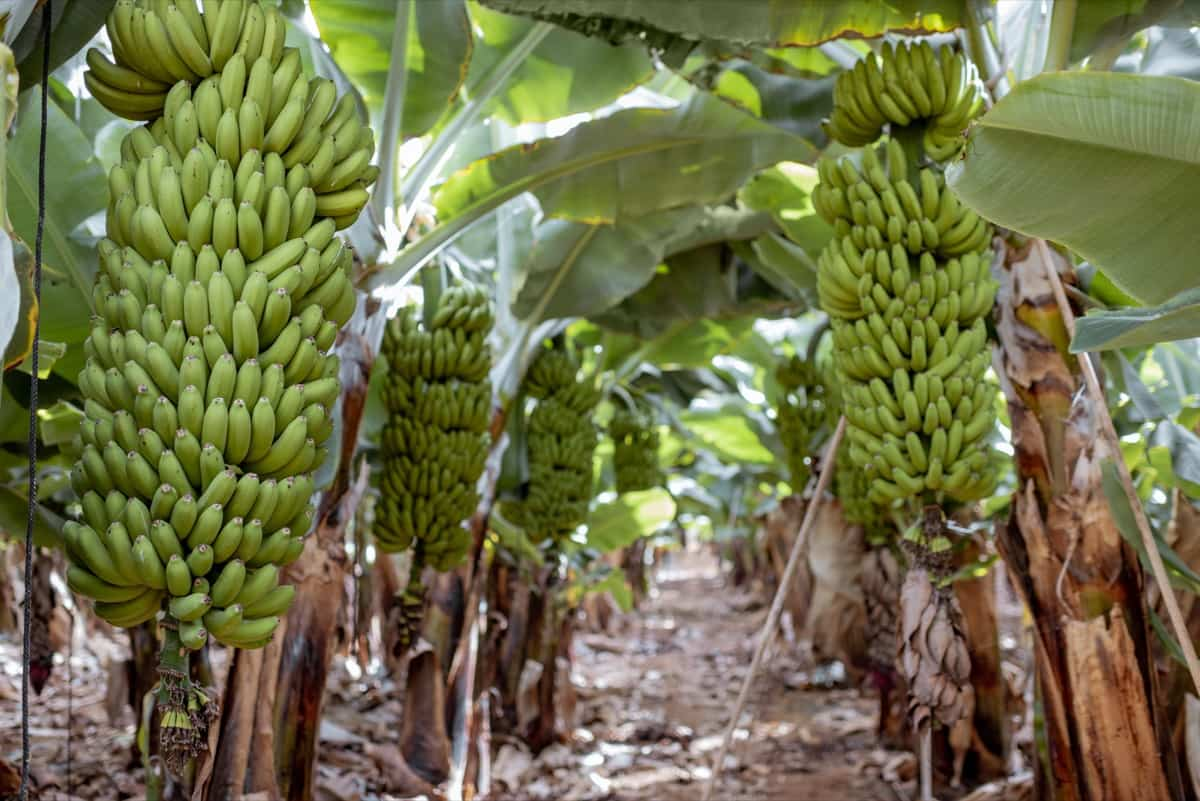
Slow-release Fertilizer for Bananas
Frequent fertilization (6 to 8 times a year) is essential for maximum banana production in low-fertility soils like sandy and calcareous soils. 35% of N, P, and K should be applied during vegetative growth after planting, 40% early flower emergence, and 25% after flower emergence. The recommended N-P2O5-K2O ratio is 3-1-6 for water-soluble fertilizers.
Dry form Multi-K™ is suitable for broadcasting and can be spread manually or with fertilizer spreaders. Both soluble crystalline particles and prills (2-3 mm granules) forms are fully water-soluble, with prills being ideal for hand and mechanized spreading. The fertilizer amount depends on stalk size, age, and number per mat. Young plants should be fertilized every two months with a 3-1-6 N-P2O5-K2O ratio, gradually increasing to 2.5 kg to 3.0 kg during flowering and fruiting stages, 10 to 18 months later.
Foliar Feeding for Banana Plants
- Supplementing Nutrients: When the banana crop requires fixed and immobile nutrients, foliar feeding ensures a direct nutrient supply to the plant organs.
- Quick Correction: When deficiencies are detected in advanced plant growth stages, foliar feeding offers a rapid and efficient solution.
- Overcoming Root Stress: In cases of hampered root activity due to external stresses like low soil temperature, poor aeration, pests, or mechanical damage, the foliar application provides nutrients directly to the plant.
- Weed Infestation: Foliar feeding bypasses weed competition, ensuring high nutrient availability to target organs.
- Critical Growth Stages: When roots cannot provide adequate nutrients during specific critical growth stages, foliar feeding compensates for nutrient deficiencies.
Nitrogen Requirements for Banana Plants
Nitrogen is a crucial nutrient for banana plants as it is vital in leaf and stem growth, enhancing overall plant vigor and promoting healthy fruit development. Adequate nitrogen supply ensures lush green leaves and robust plant growth, directly impacting fruit yield and quality. Banana plants require a sufficient nitrogen supply throughout their growth stages, especially during the vegetative phase.
However, excessive nitrogen can lead to imbalanced growth, delayed fruiting, and disease susceptibility. A balanced fertilizer with the appropriate N-P-K (Nitrogen-Phosphorus-Potassium) ratio should be applied in recommended dosage and timing for each growth stage to maintain optimal nitrogen levels.
In case you missed it: Robusta Banana Farming in India: Cultivation Practices and Production Management
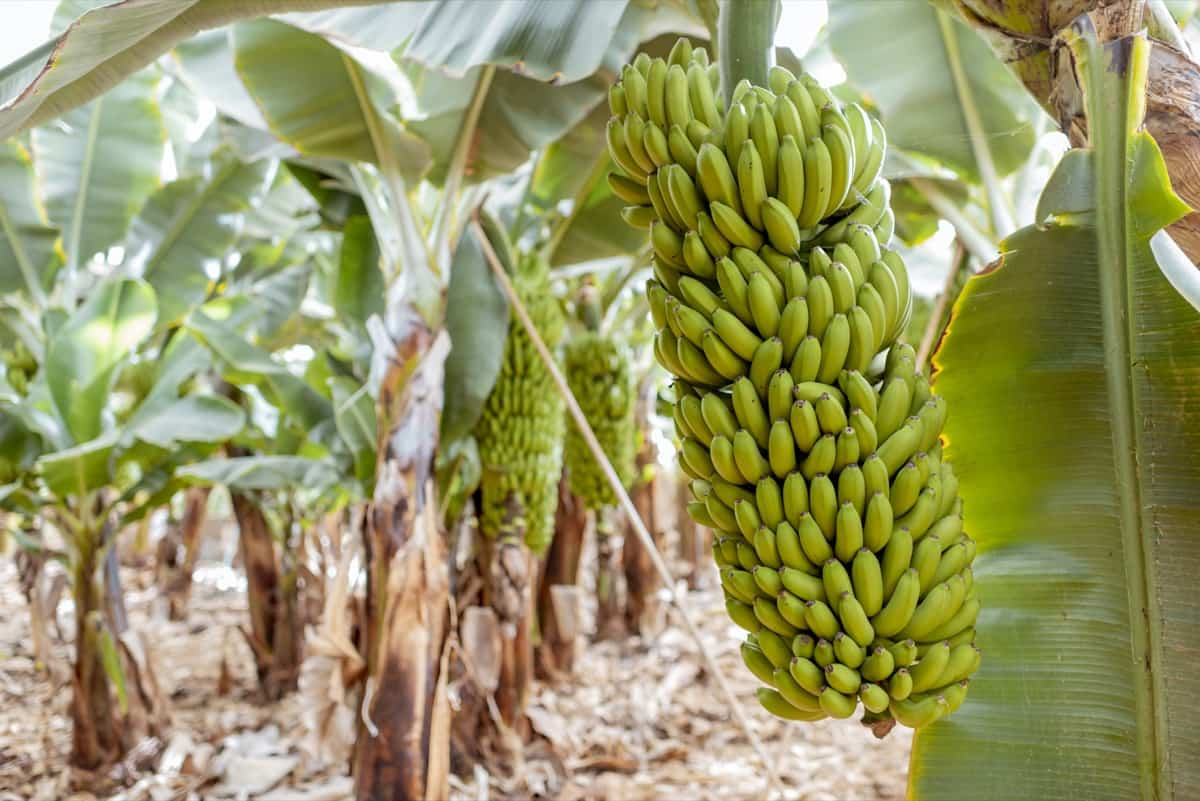
Potassium Requirements for Bananas
Potassium is essential for banana cultivation as it helps in physiological processes. It aids in water and nutrient uptake, improves disease resistance, and enhances fruit quality. Potassium deficiency can lead to symptoms like yellowing and scorching of leaf margins, reducing the plant’s ability to produce healthy bunches. Adequate potassium supply is particularly crucial during the flowering and fruiting stages, as it supports the development of large, well-filled bunches.
Phosphorus Needs of Banana Plants
Phosphorus is vital for promoting root development, early plant establishment, and energy transfer within banana plants. It aids in synthesizing nucleic acids, proteins, and enzymes, playing a role in cell division and overall plant growth.
A phosphorus deficiency causes stunted growth, weak root systems, and poor flower and fruit development. Adequate phosphorus supply is essential during the initial stages of banana growth to establish healthy root systems. Balanced fertilizers with sufficient phosphorus should be applied, especially during planting and early growth phases.
Calcium and Magnesium for Bananas
Calcium and magnesium are secondary nutrients for banana plants, contributing to the development strong cell walls and photosynthesis. Calcium prevents disorders like tip burn and internal fruit breakdown, ensuring better quality. Magnesium plays a key role in chlorophyll formation and enzyme activation, which is essential for optimal photosynthesis.
A deficiency in these nutrients can reduce fruit quality and overall plant health. To maintain adequate levels, dolomitic limestone can be applied to supply both calcium and magnesium. Additionally, foliar sprays containing these nutrients can be used during critical growth stages.
Iron Chelates for Banana Plants
Iron is an essential micronutrient for banana plants, playing a crucial role in chlorophyll synthesis and electron transport during photosynthesis. Iron deficiency cause yellowing of leaves, negatively impacting plant growth and productivity.
Iron chelates can be applied to the soil or as foliar sprays to address iron deficiencies. Chelated iron ensures better availability to the plant, even in soils with high pH, where iron may become less accessible. By supplementing with iron chelates, banana growers can promote healthy leaf coloration and improve fruit yield and quality.
Zinc Requirements in Banana Cultivation
Zinc is an essential micronutrient for banana plants, playing a significant role in enzyme activity, protein synthesis, and hormone regulation. Zinc deficiency can lead to chlorosis, stunted growth, and abnormal fruit development. Zinc sulfate applied to the soil or as foliar sprays to meet zinc requirements. Applying zinc sulfate as a soil amendment ensures a steady supply of zinc to the plant roots, while foliar sprays quickly correct deficiencies. Adequate zinc supply promotes healthier and more productive banana plants, leading to better fruit quality and increased yields.
In case you missed it: Yelakki Banana Farming in India: Production and Cultivation Management Practices
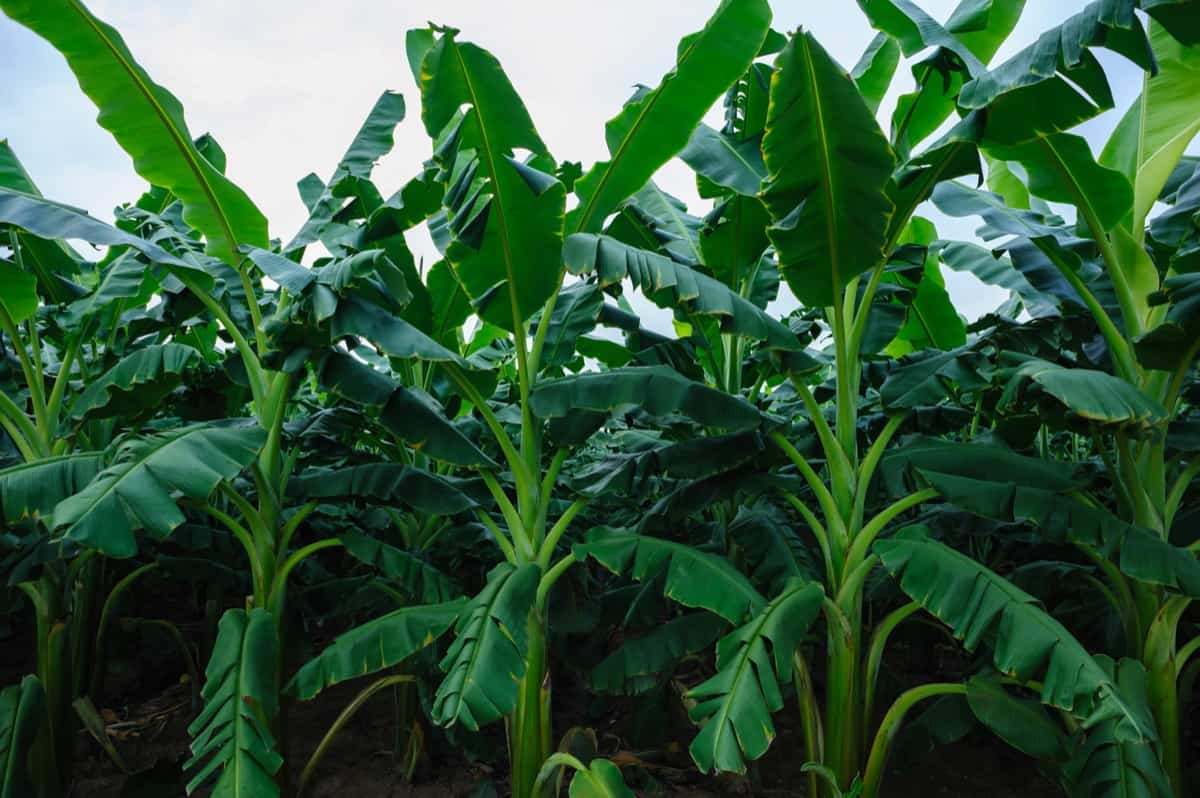
Nutritional Deficiency in Banana Plants: Identifying and Treating Symptoms
- Nitrogen: Pale green leaves, reddish-pink midribs, and rosette appearance indicate deficiency. Poor root growth affects bunch weight and fruit quality. Solution: Apply Urea (300g/plant) followed by irrigation.
- Phosphorus: Stunted growth, sawtooth chlorosis in old leaves, leaf curling, and bluish-green younger leaves signal deficiency. Solution: Apply DAP (50g/plant) followed by irrigation.
- Potassium: Orange-yellow old leaves, scorched margins, reduced leaf area, and delayed flower initiation result from deficiency. Solution: Spray Potassium Sulphate (1%) on leaves.
- Calcium: Deformed or absent leaf lamina, marginal leaf necrosis, and thickened veins indicate deficiency. Solution: Apply lime (50g/plant) followed by irrigation.
- Magnesium: Yellow midblade and midrib with green margins, purple mottling of petioles, and separation of leaf sheaths signal deficiency. Solution: Apply Magnesium Sulphate (25g/plant) followed by irrigation.
- Sulphur: Yellow/white appearance of young leaves, necrotic patches on leaf margins, stunted growth, and small bunches indicate deficiency. Solution: Apply complex fertilizer (20:20:0:15) @ 20g/plant, followed by irrigation.
- Manganese: Narrow green edge on the leaf margins spreading towards the midrib signifies deficiency. Solution: Spray Manganese Sulphate (0.5%) on leaves.
- Zinc: Smaller, lanceolate-shaped young leaves, anthocyanin pigmentation on furling leaves, and light green, twisted fruit indicate deficiency. Solution: Spray Zinc Sulphate (0.5%) on leaves.
- Iron: Yellow or white younger leaves signal deficiency. Solution: Spray Iron Sulphate (0.5%) with Urea (1%) on leaves.
- Copper: Chlorosis and curved leaves with an umbrella-like appearance occur due to deficiency. Solution: Spray Copper Sulphate (0.5%) on leaves.
- Boron: Reduced leaf area, curling leaves, white stripes perpendicular to veins on young leaves, and inhibition of root and flower formation signal deficiency. Solution: Apply Borax salt (25g/plant) in the root zone.
Fertilizer Application Techniques for Bananas
Banana plants require fertile soil and ample moisture for optimal growth and production. The initial 3-4 months of development significantly influence bunch weight and hand count, necessitating careful attention during this period.
Placement: Soluble potassium, phosphorus, and nitrogen fertilizers should be readily available to the roots after planting. Broadcasting the fertilizers is preferred over concentrating them around the pseudostem, as banana roots spread rapidly away. Nutrigation (fertigation) proves most efficient, delivering nutrients directly to the root zone through irrigation.
In case you missed it: Grand Nain (G9) Banana Farming in India: A Cultivation Guide to Planting to Harvesting
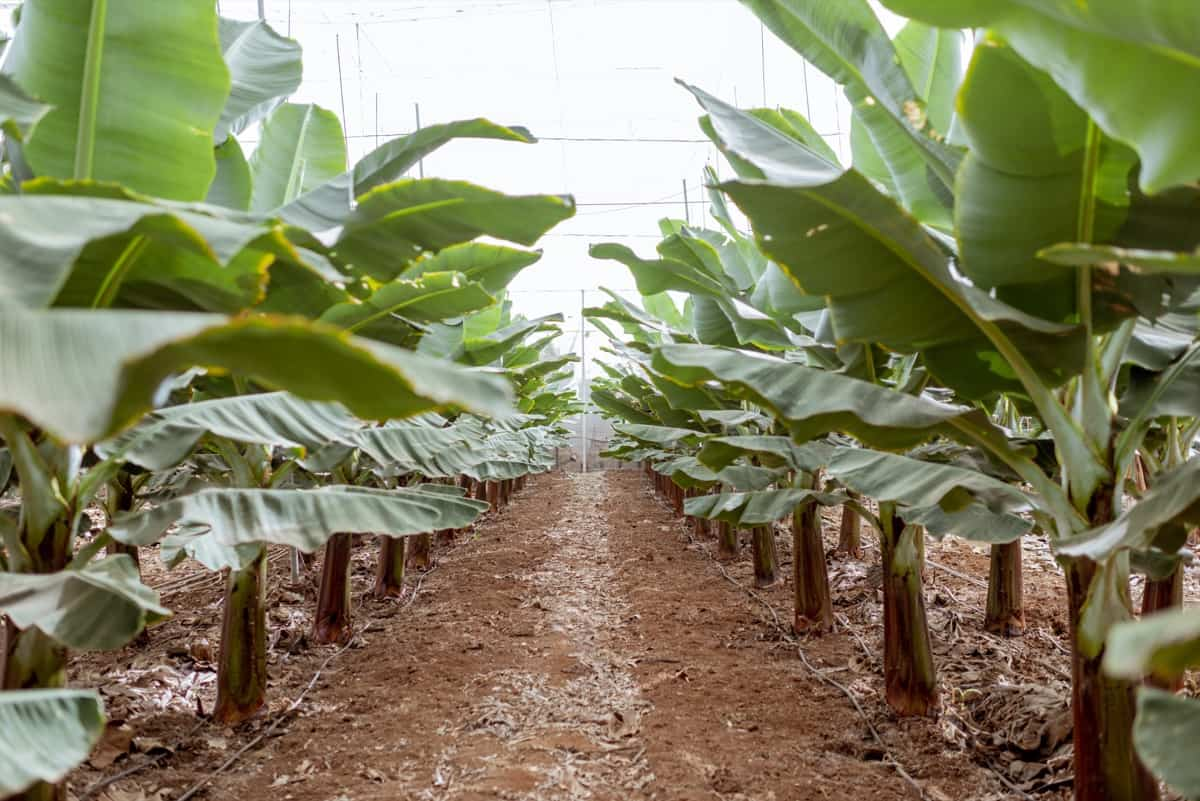
Timing: Fertilizing should align with climatic conditions and the crop’s phenological stages.
Frequency: Frequent applications are vital in light, infertile soils with heavy rainfall. P fertilizers can be applied once or twice annually in subtropical regions due to limited soil mobility. N and K fertilizers are best applied at short intervals through irrigation in humid tropics to compensate for leaching losses caused by heavy showers.
Conclusion
Balanced fertilization is crucial for banana plants to achieve optimal growth and high-quality fruit production. Providing the right amounts of nitrogen, phosphorus, potassium, and micronutrients through soil application and foliar feeding enhances plant health and yield.
- Types of Pesticides Used in Agriculture: A Beginner’s Guide
- Economical Aquaculture: A Guide to Low-Budget Fish Farming
- 15 Common Planting Errors That Can Doom Your Fruit Trees
- How to Make Houseplants Bushy: Effective Tips and Ideas
- Innovative Strategies for Boosting Coconut Pollination and Yield
- Pollination Strategies for Maximum Pumpkin Yield
- The Complete Guide to Chicken Fattening: Strategies for Maximum Growth
- Natural Solutions for Tulip Problems: 100% Effective Remedies for Leaf and Bulb-Related Issues
- Revolutionizing Citrus Preservation: Towards a Healthier, Greener Future
- Natural Solutions for Peony Leaf and Flower Problems: 100% Effective Remedies
- Maximizing Profits with Avocado Contract Farming in India: A Comprehensive Guide
- Natural Solutions for Hydrangea Problems: 100% Effective Remedies for Leaf and Flowers
- The Ultimate Guide to Choosing the Perfect Foliage Friend: Bringing Life Indoors
- From Sunlight to Sustainability: 15 Ways to Use Solar Technology in Agriculture
- The Ultimate Guide to Dong Tao Chicken: Exploring from History to Raising
- The Eco-Friendly Makeover: How to Convert Your Unused Swimming Pool into a Fish Pond
- Mastering the Art of Delaware Chicken Farming: Essentials for Healthy Backyard Flocks
- 20 Best Homemade Fertilizers for Money Plant: DIY Recipes and Application Methods
- How to Craft a Comprehensive Free-Range Chicken Farming Business Plan
- Brighten Your Flock: Raising Easter Egger Chickens for Beauty and Bounty
- How to Optimize Your Poultry Egg Farm Business Plan with These Strategies
- Subsidy for Spirulina Cultivation: How Indian Government Schemes Encouraging Spirulina Farmers
- Ultimate Guide to Raising Dominique Chickens: Breeding, Feeding, Egg-Production, and Care
- Mastering the Art of Raising Jersey Giant Chickens: Care, Feeding, and More
- Ultimate Guide to Raising Legbar Chickens: Breeding, Farming Practices, Diet, Egg-Production
- How to Raise Welsummer Chickens: A Comprehensive Guide for Beginners
- How to Protect Indoor Plants in Winter: A Comprehensive Guide
- Ultimate Guide to Grow Bag Gardening: Tips, Tricks, and Planting Ideas for Urban Gardeners
- Guide to Lotus Cultivation: How to Propagate, Plant, Grow, Care, Cost, and Profit
- Agriculture Drone Subsidy Scheme: Government Kisan Subsidy, License, and How to Apply Online
- Ultimate Guide to Raising Araucana Chickens: Breed Profile, Farming Economics, Diet, and Care
- Bringing Hydroponics to Classroom: Importance, Benefits of Learning for School Students
- Ultimate Guide to Raising Polish Chickens: Breed Profile, Farming Economics, Diet, and Care
- Ultimate Guide to Raising Australorp Chickens: Profile, Farming Economics, Egg Production, Diet, and Care
- Silkie Chicken Farming: Raising Practices, Varieties, Egg Production, Diet, and Care
- Sussex Chicken Farming: Raising Practices, Varieties, Egg Production, Diet and Care